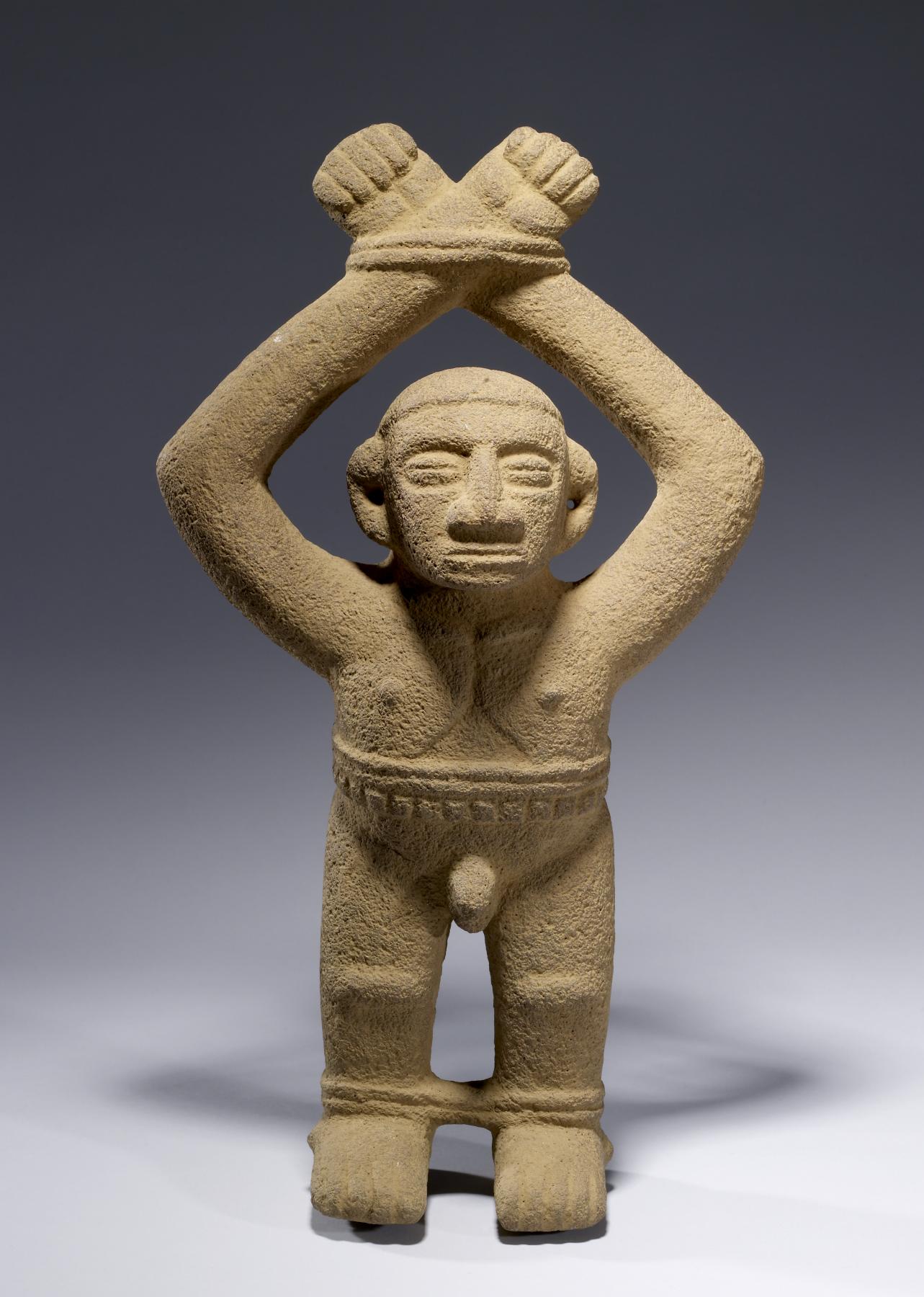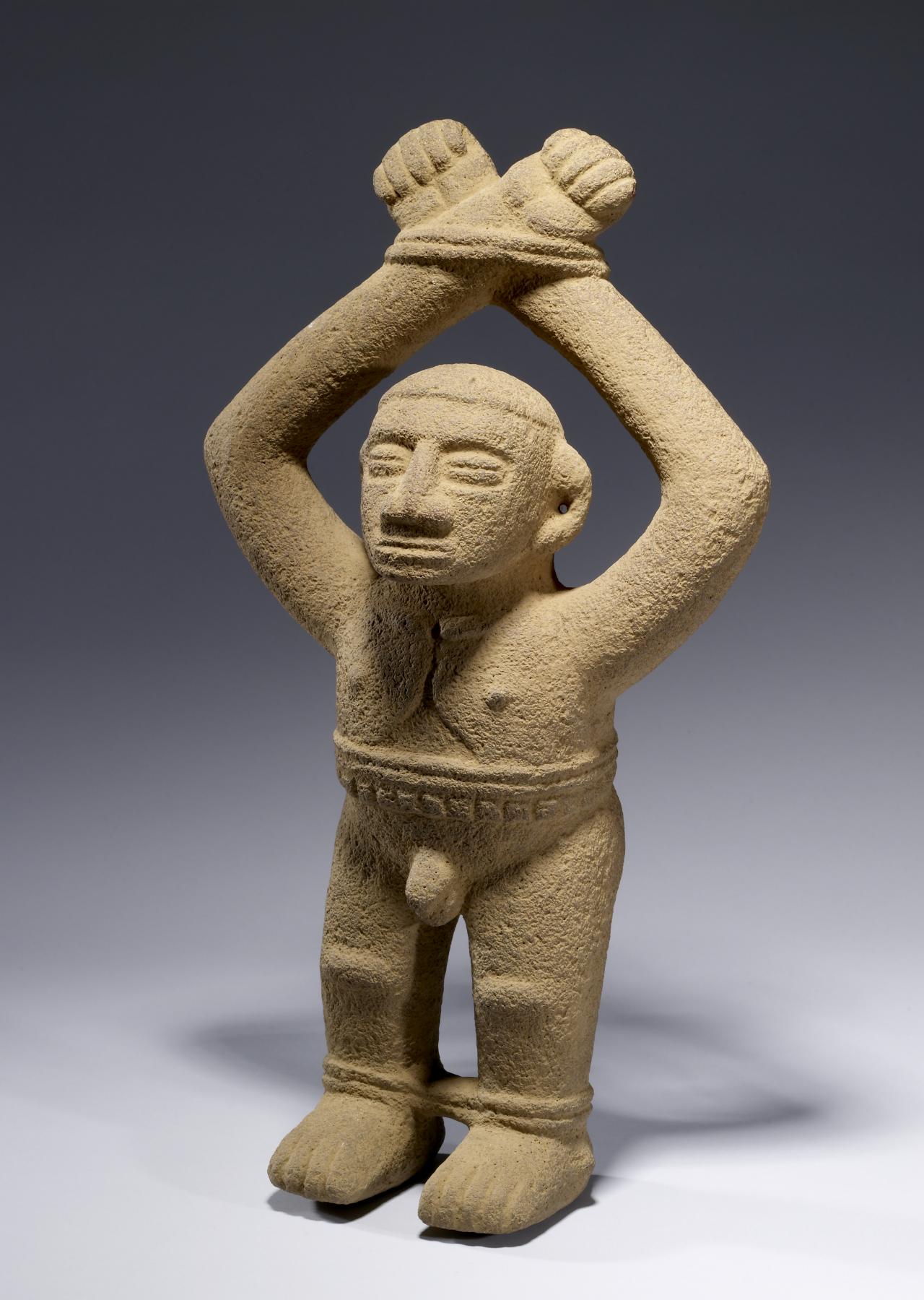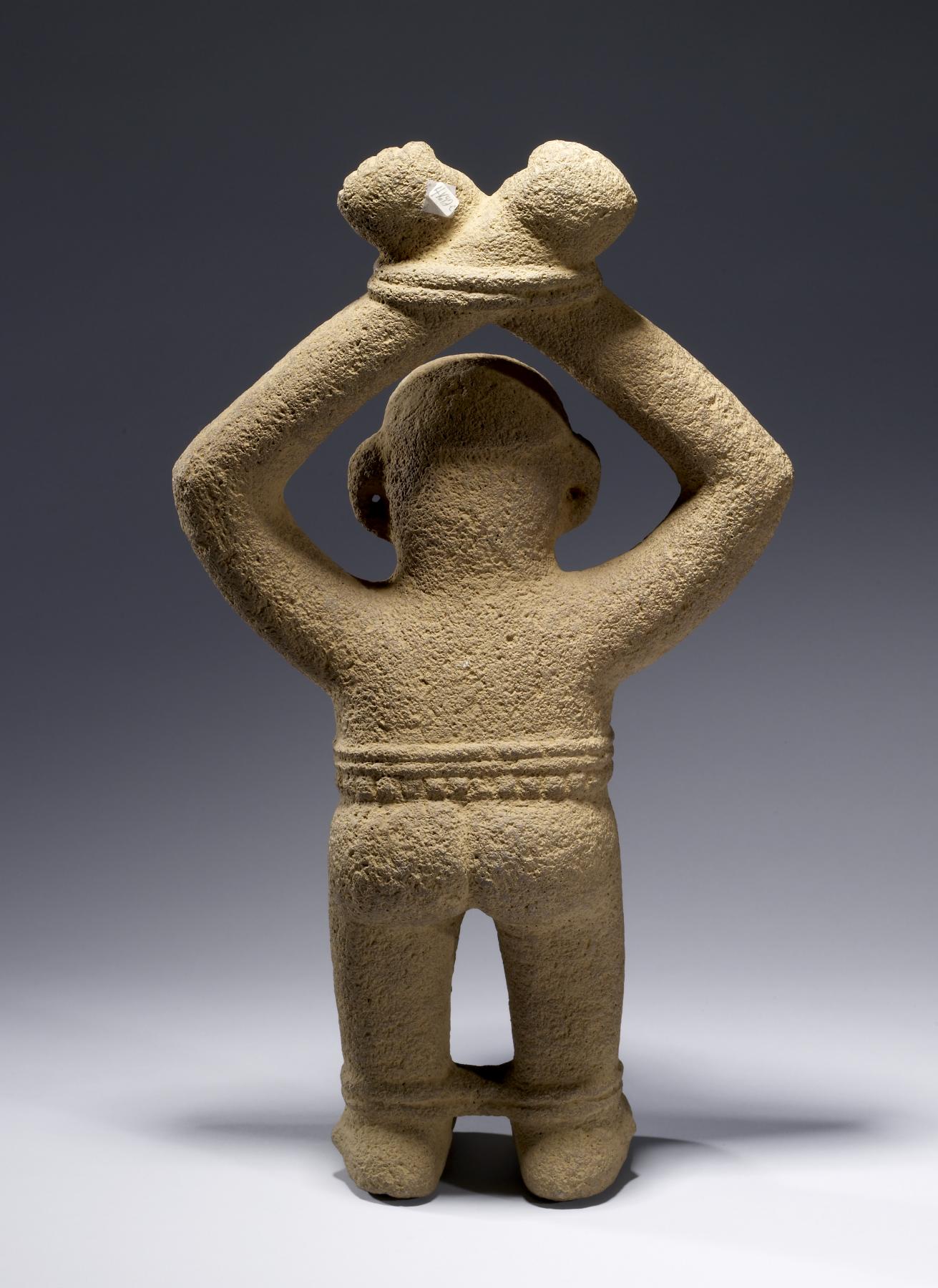Captive Figure
(Ancient Americas )
Warfare was a common means of territorial defense and expansion, the victors gaining land and resources and especially tribute in the form of goods (foodstuff s and crafted items) and human labor. The public display of bound captives proclaimed a community's hegemony and the prowess of the local chief, their communal dominance being preserved in the form of stone sculptures exhibited in plazas and around administrative/ceremonial buildings. The largest such sculptures are those of warriors, typically portrayed with raised weapon and carrying a trophy head. Smaller sculptures depict the vanquished such as this defeated warrior with bound arms above his head and ankles similarly secured. His midsection sports a belt-like wrapping adorned with shell or metal beads. The figure's pierced earlobes may have been garnished with ornaments, likely made of shell or metal.
Provenance
Provenance (from the French provenir, 'to come from/forth') is the chronology of the ownership, custody, or location of a historical object. Learn more about provenance at the Walters.
Private collection, New York; Ron Messick Fine Arts, Santa Fe, New Mexico; purchased by John G. Bourne, Sante Fe, 2001; given to John G. Bourne Foundation, 2001 [1]; given to Walters Art Museum, 2013.
[1] according to Bourne Foundation accounts
Exhibitions
| 2012-2013 | Exploring Art of the Ancient Americas: The John Bourne Collection Gift. The Walters Art Museum, Baltimore; Frist Center for the Visual Arts, Nashville. |
Geographies
Costa Rica (Place of Origin)
Measurements
H: 17 3/8 x W: 9 13/16 x D: 5 in. (44.2 x 24.89 x 12.7 cm)
Credit Line
Gift of John G. Bourne Foundation, 2013
Location in Museum
Not on view
Accession Number
In libraries, galleries, museums, and archives, an accession number is a unique identifier assigned to each object in the collection.
In libraries, galleries, museums, and archives, an accession number is a unique identifier assigned to each object in the collection.
2009.20.207








